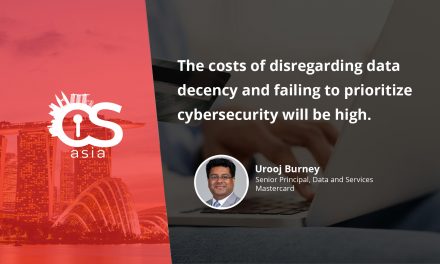From ‘good AI vs bad AI’ use cases to anticipated surges in critical infrastructure attacks, the following trends warrant close attention.
With the pace of technological progress quickening, 2024 is shaping up to deliver another round of breakthroughs that promise to fundamentally reshape how the world lives, interacts, and communicates.
Pushing the boundaries of innovation, AI and ML are poised to begin making serious impacts in every aspect of our lives, including cybersecurity.

Here are some of our cybersecurity insights in the era of AI, data privacy, and the increased attacks on critical infrastructure in 2024.
-
The good and bad sides of AI
Adversarial AI will increasingly be a problem. This is because generative AI be used to collect information from social media, corporate emails, blogs, and other sources to generate specific and realistic phishing emails that can be personalized and mass-produced with almost no human input. As a result, organizations must deploy more advanced phishing detection systems, including those optimized to detect AI-generated content and improve employee training.AI will increasingly be used to generate network or endpoint behavioral patterns to see if different security products can identify them. As a lot of detection occurs in security information and event management, with testing via log messages rather than actual behavior: so AI is perfectly suited to take on a pivotal role in testing and evaluating security products.
-
Shifting of data privacy risks to third parties
Stringent enforcement of who and what has access to personally identifiable information (and how to manage it securely) requires special attention and specific skills. Increasingly, organizations will outsource the management of personally identifiable information to step up efforts to protect the data and shift more of the risk to a third party. -
Increasing supply chain diversification
Organizations will start to push more risk assumption into the supply chain to protect themselves against inherited security flaws. In 2024, there will be stricter documentation requirements for secure design, implementation, and validation of supply chain components. To build resilience, organizations will diversify their supply chain for critical parts. -
Critical infrastructure will remain key targets
If the wars in Ukraine or Israel spread, this will drive up the number of attacks from state-sponsored threat actors. We have already seen increased attacks on utilities firms, and in 2024, this will expand to include connected medical and smart home devices. -
People and policies will overshadow products
Products are an essential part of cybersecurity; however, people and policies are critical to the fine-tuning and strengthening of defenses. -
IoT cyber regulations will be more aligned
There are numerous regulations worldwide to improve IoT cybersecurity. In 2024, there will be more harmonization of the disparate legislations. This will save manufacturers from having to grapple with a multitude of requirements that slow production and drive up costs. However, a global standard will remain elusive for 2024. -
Boosting cyber resilience is non-negotiable
Cybercrime is the world’s third largest gross domestic product. Bad actors are already utilizing intelligent tools to try to access networks, so it is vital for organizations to strengthen their defenses by integrating AI-driven security testing. Those that fail to embrace intelligent testing in 2024 are leaving flaw discovery to bad actors!

















